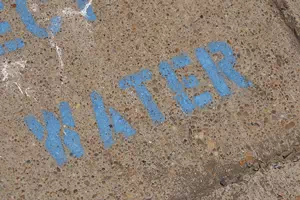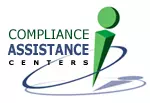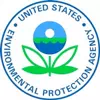Facilities Management — Wastewater Treatment
The following includes information excerpted and adapted from the EPA Sector Notebook Profile of the Healthcare Industry:
Water regulations establish different permitting programs for direct and indirect wastewater discharges.
- "Direct discharge" refers to wastewater discharged directly into a stream or other receiving body. Direct discharges are regulated under the National Pollutant Discharge Elimination System (NPDES) program.
- "Indirect discharge" refers to wastewater that is sent to a sanitary sewer. Indirect discharges are subject to regulations by the local sewer authority.
Most hospitals are indirect dischargers.
Sewer authorities that serve significant industrial users are required to implement industrial pretreatment programs (IPPs). At present, approximately 1,500 of the nation's largest municipalities have been required to develop IPPs. Some municipalities have determined hospitals to be significant industrial users.
Most municipalities have established local prohibitions that apply specifically to medical waste discharges. For example, some municipalities have set a prohibition on "all medical waste." Other prohibitions include, for example, no discharge of discernible body parts, no human remains greater than 0.5 inches in diameter, and/or no radioactive wastes. The ability of municipalities to establish prohibitions to meet their specific needs/interests is very flexible.
In addition, Federal Pretreatment Regulations prohibit:
- discharges of fire or explosion hazards
- corrosive discharges (pH < 5.0)
- solid or viscous pollutants
- heat (in amounts that cause the treatment plant influent to exceed 104 degrees F)
- pollutants that cause toxic gases, fumes, or vapors
- any other pollutant (including oil and grease) that will interfere with or pass through the treatment plant
There are very few direct discharging hospitals. For example, in 2004, 11 hospitals in the U.S. and obtained "non-major" NPDES permits, and only one had obtained a major NPDES permit.
NPDES permits are issued either by EPA or by the state in which a facility is located, in cases where the state has been specifically authorized to implement the NPDES Permit Program. In either case, the overall form of the permit application and the general permit requirements are those established under federal regulations. But more specific regulations may apply in individual cases, depending on technology-based discharge standards (40 CFR 460) and on water quality standards for the water body receiving the discharge.
Because the numeric limits that apply to a given facility are site specific, the best way to get more detailed information is to contact the EPA Regional pretreatment coordinator responsible for the region where the facility is located.
Common areas for inspections
While an EPA inspector is authorized to examine a wide range of documents and operations, he or she will probably be interested in three areas in particular that relate to Clean Water Act compliance:
- wastewater discharges
- stormwater discharges
- any aboveground or underground oil storage containers
Typical records that an EPA inspector may ask to review include:
- Industrial User permit (IU permit) for discharges to the local municipality
- Spill Prevention, Control, and Countermeasure (SPCC) Plan. (The purpose of an SPCC plan is to prevent any discharge of oil into or upon navigable waters of the United States or adjoining shorelines.)
- Phase II stormwater permits under the NPDES program, for public hospitals located in urbanized areas
- NPDES construction stormwater permits (Phase I and Phase II), required for any construction activity greater than 1 acre for any hospital located in urban or rural areas)
- NPDES general permit for discharging directly to a water body (direct discharge
Visit the Office of Water web site and the NPDES website for additional information.




